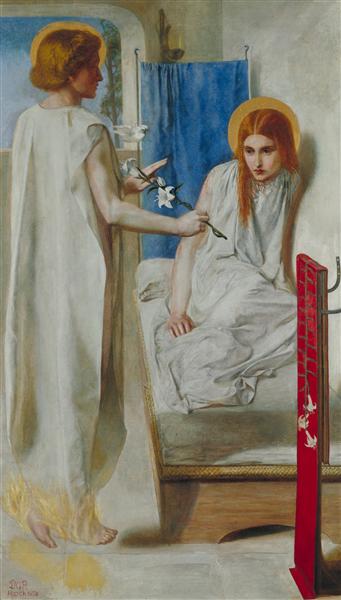
Aestheticism
Art movement
Aestheticism (also the Aesthetic Movement) is an intellectual and art movement supporting the emphasis of aesthetic values more than social-political themes for literature, fine art, music and other arts. This meant that Art from this particular movement focused more on being beautiful rather than having a deeper meaning - 'Art for Art's sake'. It was particularly prominent in Europe during the 19th century, supported by notable figures such as Oscar Wilde, but contemporary critics are also associated with the movement, such as Harold Bloom, who has recently argued against projecting social and political ideology onto literary works, which he believes has been a growing problem in humanities departments over the last century.
In the 19th century, it was related to other movements such as symbolism or decadence represented in France, or decadentismo represented in Italy, and may be considered the British version of the same style.
The British decadent writers were much influenced by the Oxford professor Walter Pater and his essays published during 1867–68, in which he stated that life had to be lived intensely, with an ideal of beauty. His text Studies in the History of the Renaissance (1873) was very well regarded by art-oriented young men of the late 19th century. Writers of the Decadent movement used the slogan "Art for Art's Sake" (L'art pour l'art), the origin of which is debated. Some claim that it was invented by the philosopher Victor Cousin, although Angela Leighton in the publication On Form: Poetry, Aestheticism and the Legacy of a Word (2007) notes that the phrase was used by Benjamin Constant as early as 1804. It is generally accepted to have been promoted by Théophile Gautier in France, who interpreted the phrase to suggest that there was not any real association between art and morality.
The artists and writers of Aesthetic style tended to profess that the Arts should provide refined sensuous pleasure, rather than convey moral or sentimental messages. As a consequence, they did not accept John Ruskin, Matthew Arnold, and George MacDonald's conception of art as something moral or useful, "Art for truth's sake". Instead, they believed that Art did not have any didactic purpose; it only needed to be beautiful. The Aesthetes developed a cult of beauty, which they considered the basic factor of art. Life should copy Art, they asserted. They considered nature as crude and lacking in design when compared to art. The main characteristics of the style were: suggestion rather than statement, sensuality, great use of symbols, and synaesthetic/ Ideasthetic effects—that is, correspondence between words, colours and music. Music was used to establish mood.
Predecessors of the Aesthetics included John Keats and Percy Bysshe Shelley, and some of the Pre-Raphaelites. In Britain the best representatives were Oscar Wilde and Algernon Charles Swinburne, both influenced by the French Symbolists, and James McNeill Whistler and Dante Gabriel Rossetti. The style and these poets were satirised by Gilbert and Sullivan's comic opera Patience and other works, such as F. C. Burnand's drama The Colonel, and in comic magazines such as Punch.
This is a part of the Wikipedia article used under the Creative Commons Attribution-Sharealike 3.0 Unported License (CC-BY-SA). The full text of the article is here →
Wikipedia: https://en.wikipedia.org/wiki/Aestheticism